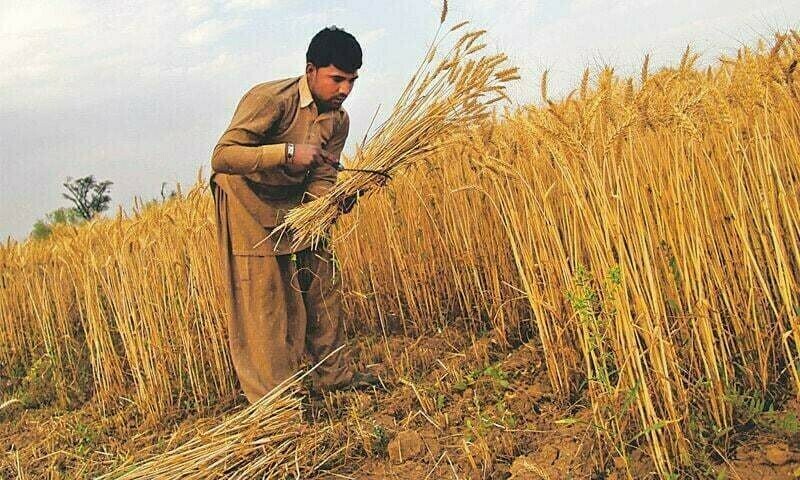LAHORE: As the harvesting of wheat crop gains momentum in Punjab and Sindh, growers are fearing a further drop in market prices.
Grain reaping season is in full swing in Sindh and South Punjab, where almost 50 per cent of the crop has been harvested. The arrival of the new crop has brought down grain rates from the previous level of Rs2,900-Rs3,700 to Rs2,200-Rs2,390 per 40 kg in various markets of Punjab and Sindh, and up to Rs2,450 in Khyber Pakhtunkhwa and Balochistan.
The apprehension that the rates will slip further when harvesting activity picks up in central Punjab is giving growers sleepless nights. They say they have been left at the mercy of private actors after the federal and provincial governments of Punjab and Sindh withdrew themselves from the market under an IMF condition.
Punjab, which used to pick on an average 4.2 million tonnes of wheat from the growers, decided not to procure even a single grain last season, at the eleventh hour, though the government had been assuring farmers throughout that a purchase policy was being formulated.
Criticise Centre, provinces’ decision not to buy grain directly, use carryover stocks
Citing huge carryover stocks, built because of an ‘unwise’ import policy of the preceding interim setup, the Maryam Nawaz government had backed out of its promise.
However, the federal government had to increase its procurement target from 1.4mt to 1.8mt, following protests by farmers and pressure to ensure a sufficient supply of wheat.
Continuing down the path of wheat market deregulation — as per an IMF demand — all three governments have decided to stay out of the market this season as well. Sindh’s decision came after Chief Minister Murad Ali Shah announced that the province has a 1.3mt carryover grain stock and will also not procure wheat.
Since Punjab produces around 80pc of the grain in the country, its PML-N-led government feels any adverse impact on wheat growers could ruin its vote-bank in rural constituencies.
In addition, there are fears that a lack of strategic reserves to meet any eventuality during the off-season may lead to flour price hikes, particularly in the urban centres, and offend its voters there too.
The provincial government is now trying to woo the private sector (read flour milling industry) to take responsibility for maintaining strategic reserves of grain. A meeting with flour millers has already been held, but it is not yet clear at the moment what incentives the government will offer them.
Mills that used to procure around 2mt grain to meet their demand for the first six months of a crop year — for the rest of the year, the respective food departments would release wheat from their storages at a subsidized rate — will have to increase their purchasing capacity to at least 4mt to continue their milling operation all year round, in the absence of such support.
This increased capacity will also require more storage space and funds, and the big question is that who will arrange these funds.
Shortage concerns
Though Punjab offered incentives through schemes such as Kissan Card this crop season, it could not achieve its wheat-sowing target.
Provincial agriculture authorities claim that up to 98pc of the sowing target had been met, but leaders of farmers’ bodies like Mian Umair Masood of the Kissan Ittehad say the acreage dropped by 25pc in the province.
Accusing the government of figure-fudging, he warned of a 30pc shortfall in overall wheat production, with the per acre yield declining on an average of 10 maunds.
“While the crop has been eliminated in the arid Potohar region because of extremely low rainfall, farmers in other areas did not fully use farm inputs, including certified seed and fertiliser, owing to rising production costs with poor chances of getting good rates in the absence of public sector in the market.”
Sindh Abadgar Board President Mahmood Nawaz Shah said his province would also suffer up to 15pc yield loss, mainly due to erratic weather patterns and the use of poor-quality seeds.
He bemoaned that Nara region farmers were not even able to complete their last watering of the crop, and expected the yield loss there may go up to 45pc.
The US Department of Agriculture has also forecast a staggering 13pc drop in Pakistan’s wheat output for 2025-26 at 27.5mt, from a record harvest of 31.5mt in the previous season. This is primarily due to a 7pc reduction in cultivation area and unusually dry weather conditions that have persisted since October 2024.
Published in Dawn, April 12th, 2025


